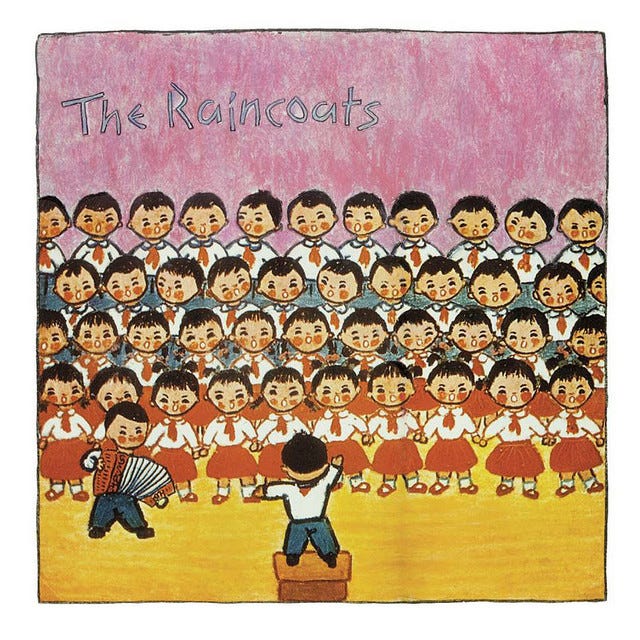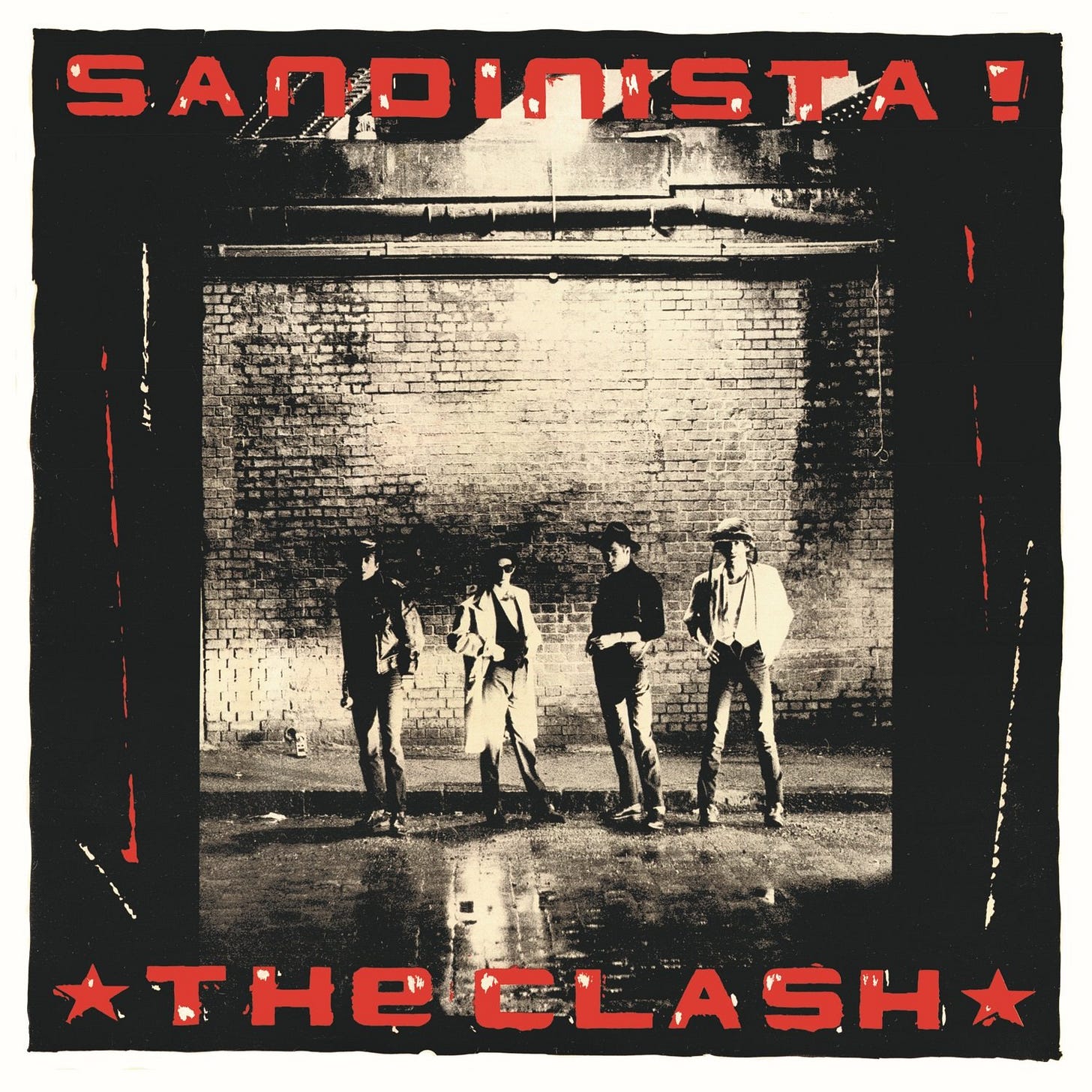This week, I’m focusing on four artists. They aren’t all directly related to each other, but they are all punk or punk-adjacent, at least sonically, and they all used violin (or viola) within that genre.
There’s a whole handful of folk punk bands with fiddle players, but that isn’t what I’m going for. Those groups, i.e. the Pogues or Defiance, Ohio, are drawing on a pre-existing style of fiddle-playing and incorporating it into punk. The artists I’m featuring use classical instruments the same way punk uses guitars: innovatively producing a sound that is loud, rhythmic, and sometimes discordant.
I’ll present the four groups chronologically, but I’m not trying to suggest a direct lineage, because as far as I know their string usage wasn’t a direct point of inspiration for each other. On that note, I’m also not arguing that all of these bands are strictly speaking in the same genre. I’m just doing what I love best: tracing a specific sound.
The Velvet Underground
The Velvet Underground’s first album, The Velvet Underground & Nico (1967), featured John Cale on electric viola. Cale was classically trained on viola as a teenager in Wales. He moved to the US to continue his classical education and ended up getting into drone music instead. From there, he founded the Velvet Underground with Lou Reed.
The Velvet Underground & Nico opens with the atypically sweet “Sunday Morning,” with pretty standard viola accompaniment in the back of the mix. It’s joined by a glockenspiel, suggesting that this song is a precursor to twee (a genre I’ll mention again later). Cale’s drone background comes to the fore later in the album on “Venus in Furs.” In the chorus, the viola functions alongside the rhythm guitar, filling out a basic major-key chord progression. It’s the verses where the long, sustained minor-key viola notes become abrasive, interrupted by screeching higher notes. The screechiness is the main focus on “The Black Angel’s Death Song.” When VU was playing bars in their early days, before they developed a cult following, this song would clear the room. (It’s also the song that made me fall in love with them.)
Is the Velvet Underground punk? There’s general agreement that they count as proto-punk, because they were one of the immediate precursors to the New York punk scene of the 70s. After Reed fired Cale from the band, however, VU transitioned from weird room-emptying screeching to more accessible rock ‘n’ roll. But for their first two albums (the second doesn’t appear here because it lacks a viola), they were certainly doing things with rock music that no one had done before, which became one of the definitions of first-wave punk a decade later.
The Raincoats
I haven’t featured a Raincoats song in this newsletter yet, which is a travesty, because their debut album is one of my favorites, largely because of Vicky Aspinall’s prominent violin parts. Like John Cale, Aspinall was classically trained, and she had to teach herself how to play “badly” when she joined the band.
The Raincoats are an acquired taste. Almost always playing with an all-female lineup, they eschewed the rules of male-dominated rock ‘n’ roll. Aside from Aspinall, they had no musical experience, but that didn’t deter them from picking up instruments and making noise. The songs on their debut album (The Raincoats, 1979) don’t follow typical rhythm and rhyme schemes, but they are musically brilliant for their lack of adherence to any pre-established rules.
The drums don’t always provide the percussive spine of their songs (because the drummer, Palmolive, didn’t know how to play them and was making it up as she went along), so the violin sometimes fills out the rhythm section. On “No Side to Fall In,” the violin screeches like Cale’s viola, but also provides an exhilarating melody, opening the song with a fast-paced intro riff. On “No Looking,” the violin part starts with a drone and then suddenly switches to more percussive thrusts. And on “Fairytale in the Supermarket,” the Raincoats’ most well-known original song, the violin does it all.
The Clash
It’s perhaps misleading to include the Clash, because the artist responsible for the violin here is Tymon Dogg, who was a longtime collaborator of Joe Strummer’s but not a formal member of the band. He did, however, write, play violin, and sing on “Lose This Skin”, on the Clash’s (in my opinion) best album, Sandinista!
At the beginning of their career, the Clash were at the forefront of the guitar-centric, male, evolved-from-rock-’n’-roll UK punk scene that the Raincoats were consciously avoiding. They stuck to this sound for their first two albums, but on London Calling (the more typical pick for their best album), they started to dip into Jamaican music. By Sandinista!, they were straight-up recording their own reggae and dub.
While the reggae/dub sound is the most obvious genre switch, Sandinista! is full of experiments, some of them more easily classified than others. “Lose This Skin” approaches the Irish folk punk sound of the Pogues, but really the violin is standing in for an electric guitar, sounding just as brash and aggressive. Dogg plays violin on a few other songs on Sandinista!. These include “Junco Partner,” one of their attempts at reggae, and “Something About England,” which is the Clash’s version of the music hall send-up so many UK rock bands engaged in in the 60s and 70s, but with more socio-historical musing and a lot less camp than similar songs recorded by Queen, the Rolling Stones, etc.
Los Campesinos!
I’m never sure how to classify Los Campesinos!. They came out of the mid-2000s Myspace scene and started as a twee band, but they quickly shifted from their cutesier roots to something noisier and angrier, and the members often describe their music as emo. Does that make LC! a punk band? In terms of how record labels define genres in the 21st century, probably not. But on the other hand, a lot of their music is screechy guitar rock yelling about how life sucks. And if we’re tracing influences, all albums but their first have been produced by John Goodmanson, who also worked with Sleater Kinney and Bikini Kill, who were in turn inspired by first-wave UK punk bands including the Raincoats.
I’m including songs from three different albums here, because violin was a consistent part of Los Campesinos!’s sound until Harriet Coleman left the band. On “This Is How You Spell, ‘HAHAHA, We Destroyed The Hopes And Dreams Of A Generation Of Faux-Romantics,’” there’s a bombastic explosion of sound that they would build on later, but the violin also gets sweeter melodic lines, most notably in the spoken-word interlude toward the end of the song. The violin here feels closer to other twee indie bands like Belle and Sebastian than the other bands I’ve included here. (Like “Sunday Morning,” LC!’s first album is also notable for the presence of a glockenspiel.)
Their second album, We Are Beautiful, We Are Doomed, was released later the same year, but they were already moving away from the twee thing. On “It’s Never That Easy Though, Is It? (Song For The Other Kurt),” the mix is more guitar-forward, but the violin also gets to shine, this time with a breakneck pace reminiscent of the Raincoats’ faster songs. Their third album, Romance Is Boring (2010), completed the shift to indie/emo rock. On “I Just Sighed. I Just Sighed, Just So You Know,” the solo violin lines are gone apart from the closing bars, but it’s a crucial part of the wall of sound that hits you as soon as the song starts. Although the tone is quite different, it reminds me of the droning effect produced by John Cale and Tymon Dogg. It’s also the song that introduced me to LC! circa 2014, so I have a soft spot for it.
I could say more exploring the music I covered here in comparison to use of strings in pop and soft rock, from Phil Spector’s wall of sound to the twee music I alluded to. In fact, I surprised myself by mentioning twee twice in this article, because one tends to think of it and punk as opposites. That’s a connection for me to research more in the future. But to be honest, I focused on the groups I did because they’re my favorites. With the exception of the Clash, I got into them precisely because they used strings in ways I’d never heard before, but immediately loved.
So if you’ve got songs that fit the sound outlined here that I missed, let me know in the comments! I’d love to hear them.






this was a great read!! the descriptive language you use for sounds made me want to listen to each of these songs ASAP